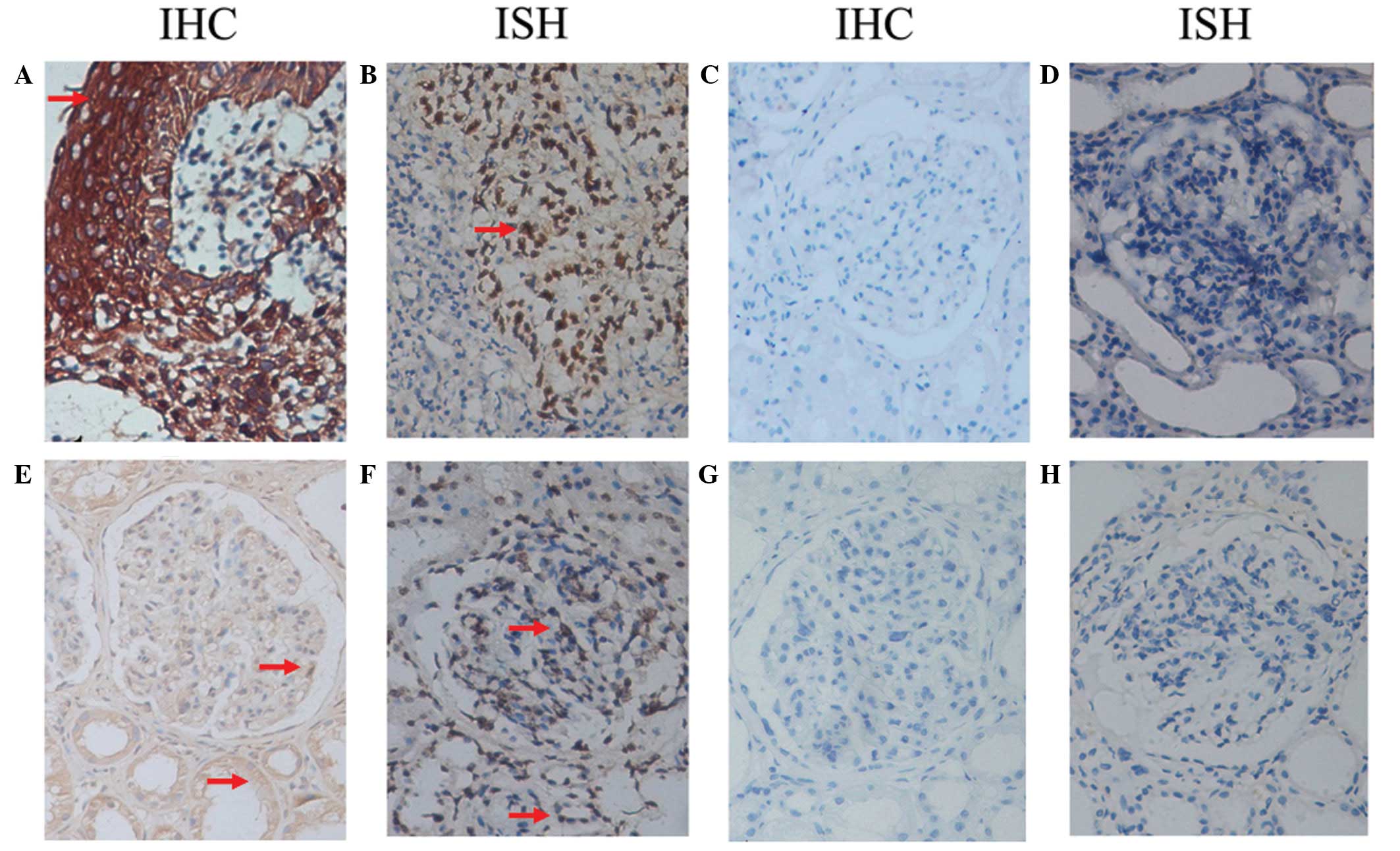The expression of renal Epstein‑Barr virus markers in patients with lupus nephritis
- Authors:
- Published online on: February 24, 2014 https://doi.org/10.3892/etm.2014.1578
- Pages: 1135-1140
Metrics:
Total
Views: 0 (Spandidos Publications: | PMC Statistics:
)
Total PDF Downloads: 0 (Spandidos Publications: | PMC Statistics:
)
Abstract
The aim of this study was to investigate the role of renal Epstein‑Barr virus (EBV) infection in the pathogenesis of lupus nephritis (LN). A total of 58 renal tissue samples from patients with LN, seven normal renal tissue samples from patients with non‑glomerular hematuria and 37 renal tissue samples from patients with minimal change nephropathy were collected. The expression of EBV‑latent membrane protein‑1 (EBV‑LMP1) and EBV‑encoded RNA 1 (EBER-1) in the renal tissue was examined by immunohistochemistry (IHC) and in situ hybridization (ISH), respectively. The sera levels of anti-nuclear antibody as well as antibodies to extractable nuclear antigen in patients with LN were also measured. An equivalence test showed that the results from the IHC and the ISH analyses had strong agreement. The positive rates of renal EBER-1 and EBV‑LMP1 in the LN patients were significantly higher than those of the normal and minimal change nephropathy patients (P<0.001), while no significant difference was identified between those of the normal and minimal change nephropathy groups (P>0.05). The positive rates of EBV‑LMP1 and EBER-1 in the renal tissues of patients with LN were not determined to be significantly different between the relapse (immunosuppressant‑treated) and initial onset (non‑treated) patients, between the patients with and without concurrent infection, and among the patients with different age ranges (P>0.05). The proportion of LN patients positive for anti‑Sm antibody was significantly higher in the renal EBV‑positive group than in the EBV‑negative group (P<0.05), while the proportions of LN patients positive for the other autoantibodies that were examined were not identified to be significantly different between these two groups (P>0.05). The present study shows that renal EBV infection may contribute to the pathogenesis of LN by inducing anti‑Sm antibody production.











